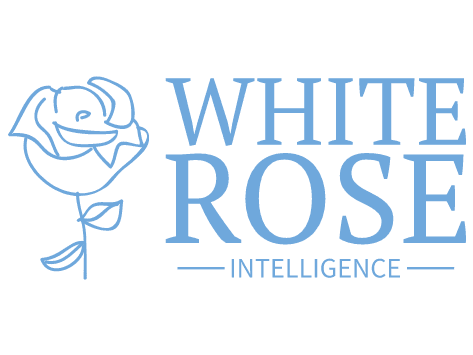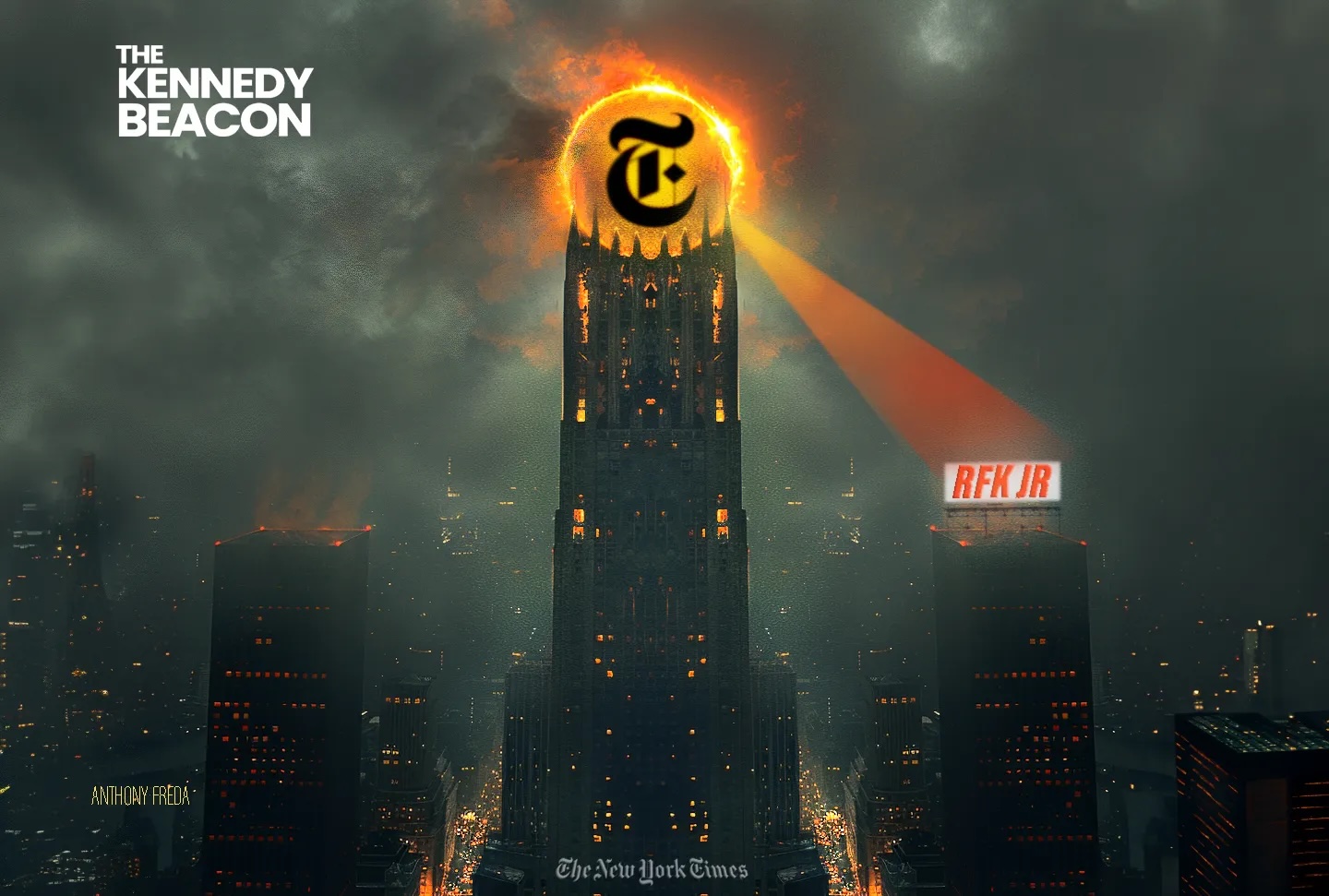Originally published by The Kennedy Beacon
In the weeks leading up to the 60th anniversary of the assassination of John F. Kennedy last November, Mark Gorton, co-chair of American Values 2024 and executive producer of the new documentary series Four Died Trying, purchased an advertisement slot in The New York Times. The ad, in part intended to promote the release of the series, read, “Today, on the 60th anniversary of President John F. Kennedy’s murder, it is time for The New York Times to thoroughly investigate this epic crime.”
Despite initial acceptance by the Times, and several rounds of editing, Gorton’s ad was eventually killed.
[Note: The Kennedy Beacon is funded by American Values 2024, a super PAC supporting Robert F. Kennedy Jr.’s independent presidential campaign.]
The New York Times has a long-standing Kennedy problem – and not just its refusal to investigate the defining crime of the last century, which the majority of Americans reject as an act of a lone gunman, according to polling by Gallup. Today, the “newspaper of record” routinely censors information published by JFK’s nephew, the presidential candidate Robert F. Kennedy Jr., and those aligned with him.
In November 2021, Skyhorse Publishing released The Real Anthony Fauci: Bill Gates, Big Pharma, and the Global War on Democracy and Public Health, written by RFK Jr. A robust critique of America’s biosecurity-industrial complex, the book sold over a million copies and earned a spot on the coveted Times Bestseller List for 17 weeks.
Despite its sales success, The Real Anthony Fauci was never reviewed in the Times, or in any mainstream paper, as Matthew Scully noted in National Review. It also never reached number one, despite far outselling its competition.
According to Skyhorse president and publisher Tony Lyons, co-chair with Gorton of American Values 2024, the Times manipulated the book’s ranking on its influential list. In January 2022, Lyons penned an article for The Defender explaining that the Times employs a “proprietary algorithm” to determine where a given release winds up in its rankings – an algorithm that appears to heavily favor pro-government narratives.
Furthermore, the Times flagged the book with a “dagger” symbol (†) indicating “Institutional, special interest, group or bulk purchases.” According to the paper, this is an arbitrary notation decided by Times editors “based on standards for inclusion that encompass proprietary vetting and audit protocols, corroborative reporting and other statistical determinations.”
In a December 9, 2022, article in Esquire, Sophie Vershbow cites multiple industry sources to explain that the Times most likely uses a service called NPD BookScan “to flag books with a large percentage of bulk orders.” Despite being “one of publishing’s main data providers,” BookScan’s data, she writes, “often did not correspond to the position on the list” published by the Times.
Given the fact that 90% of The Real Anthony Fauci’s sales came through individual customers on Amazon, Lyons called BookScan to attempt to reconcile data. According to Lyons, a representative informed him that “they would flag things as bulk sales when most of the sales came from a particular ZIP code” – and in their system, Amazon sales are treated as coming from a single ZIP code.
“Let’s say that you have a controversial book that independent bookstores decide not to carry or that Barnes and Noble decides not to carry,” Lyons told me during a phone interview. “And then you get almost all of the sales going through Amazon. That’s not saying that it’s not a best seller … it’s not saying that there’s bulk sales. It’s just saying that there’s censorship.”
This pattern of intentional misrepresentation and omission by the Times and others continues with Kennedy’s most recent book, The Wuhan Cover-Up. As of this writing, the only major coverage of its December 5, 2023, release appeared in the Wall Street Journal and Newsweek, both of which reported that independent bookstores opted not to carry the book.
Given its history, it’s unsurprising that The New York Times continues to silence dissenting voices within the Kennedy dynasty. Had the Times run Gorton’s advertisement as planned, readers would have been treated to a history of the outlet’s complicity in the cover-up of JFK’s assassination. That history is buried in the Times’ archives, preserved for all to see how the paper drifted from trusted news source to propagandist.
Intelligence at the Times
The New York Times has been controlled by the Ochs-Sulzberger family since 1896. From 1935 to 1961, the paper was led by A. G. Sulzberger’s great-grandfather, Arthur Hays Sulzberger, who oversaw the outlet’s massive growth “in size and prestige,” according to biographical information published by Columbia University.
The years leading up to Kennedy’s assassination saw Sulzberger rubbing elbows with the originators of the current military-industrial complex, who were nudging The New York Times into its ranks. He joined the board of trustees of the Rockefeller Foundation in 1939, retiring as chairman in 1957. In February of that year, Sulzberger reportedly attended the prestigious St. Simons Island Conference held by the secretive and influential Bilderberg Group, according to records housed at the John F. Kennedy Presidential Library and Archive. Also in attendance were McGeorge Bundy, who would go on to become JFK’s national security advisor; Henry Kissinger, future secretary of state under presidents Nixon and Reagan; Paul Nitze, Kennedy’s assistant secretary of defense for international security affairs; David Rockefeller, a director of the Council on Foreign Relations; and Dean Rusk, Kennedy’s future secretary of state.
During Sulzberger’s tenure, the Times also developed a close relationship with the Central Intelligence Agency. In addition to being a friend of CIA director Allen Dulles, Sulzberger signed secrecy agreements with the agency, as reported in a 1977 Rolling Stone piece by award-winning reporter Carl Bernstein. This allowed CIA agents to work within the Times itself, providing the paper with “tips” that advanced narratives favorable to the agency’s objectives. This working relationship was strengthened under Arthur Ochs “Punch” Sulzberger, who took over the paper in the months before Kennedy’s assassination.
As reported by Bernstein, “the New York Times provided cover for about ten CIA operatives between 1950 and 1966,” including Punch’s cousin C. L. Sulzberger.
Within hours of Kennedy’s assassination on November 22, 1963, the Times led the charge in establishing the false version of events later immortalized in the Warren Commission Report. In a September 1964 edition of the Times, C. L. Sulzberger wrote, “It was essential in these restless days … to remove unfounded suspicions that could excite latent jingo spirit.” C. L. was described in CIA files as an “active asset” of the agency. It was later revealed during hearings of the US House of Representatives Select Committee on Assassinations that the CIA intentionally suppressed the release of information related to the JFK assassination.
Facing Past Mistakes
Throughout the ensuing decades, this unholy merger between the NYT and the US intelligence apparatus continued to compromise the paper’s reporting and mislead the American public on issues of global significance.
The paper played a leading role in raising fear over the “Communist threat” of North Vietnam, starting with its first editorial on the Vietnam war in January 1955. As described by William M. Hammond in Reporting Vietnam: Media and Military at War, it was later revealed that the US government had issued a directive to “achieve ‘maximum cooperation’” with the press, suppressing stories of the true activities of the American military in the region and the tremendous loss of life on both sides of the conflict.
Similarly, the Times aggressively championed the story that Saddam Hussein was stockpiling weapons of mass destruction (WMDs) – a threat supposedly so great that it justified the 2003 invasion of Iraq by the US and its “coalition of the willing.” As recently summarized by Jon Schwarz in The Intercept, “The Times coverage of Iraq and its purported weapons of mass destruction was so atrocious in the lead-up to war in 2003 that the paper eventually had to issue an extensive mea culpa.”
Today, Americans are witnessing a new era of disinformation operations and censorship resulting from the direct collusion of news media and the federal government. In a March 10, 2023, article in the New York Post, Michael Shellenberger described the federally funded “censorship-industrial complex” that seeks to silence everyday Americans by disallowing any discussion of “conspiracy theories” that undermine the institutional narrative on topics from COVID-19 to election integrity.
The Post – the oldest newspaper in the country – itself experienced the power of this complex when it was removed from Twitter after breaking the now widely known “Hunter Biden laptop” story. Emma-Jo Morris, who coauthored the Post’s article on the subject, appeared alongside Robert F. Kennedy Jr. at a House Judiciary Subcommittee Hearing on Censorship and Free Speech last July. Despite the ever-increasing understanding among the general public of the government’s role in sponsoring projects such as the Center for Countering Digital Hate, the Times continues to cite its “Disinformation Dozen” report – a defamatory list in which Kennedy appears – as recently as September 2023.
To its credit, the Times has also demonstrated an ability to admit mistakes. The 1971 publication of the Pentagon Papers served as a powerful, if implicit, acknowledgment that the Vietnam War was based on false premises the paper itself had advanced. As early as 2004, the Times admitted it had not always been correct in its coverage of 9/11 and the Iraq War, its editors having “found a number of instances of coverage that was not as rigorous as it should have been.”
While the 60th anniversary of John F. Kennedy’s assassination has come and gone, it is not too late for the Times to follow its own precedent and re-embrace journalistic curiosity and integrity. As detailed in David Talbot’s November 20, 2023, column in The Kennedy Beacon, presidents “Trump and Biden repeatedly delayed declassification of nearly 4,000 documents, in direct violation of the 1992 JFK Records Collection Act, which sought to release all government documents related to the Kennedy assassination,” while the country’s media organizations “remain largely wedded to the official version of Dallas.” But the true account of 1963 is already well documented and swiftly becoming common knowledge. All the Times needs to do is decide to dig deeper into its own manipulated coverage and set the record straight.
Should the Times make such a decision, it couldn’t come at a more opportune time. Despite the fact that both his uncle and father were assassinated, Robert F. Kennedy Jr. continues to be denied Secret Service protection by the Biden administration’s Department of Homeland Security – even in light of recent death threats – and many of his ideas are censored by the Times.
In his March 7 State of the Union address, President Biden acknowledged the impact that the assassinations of Martin Luther King Jr. and Robert Kennedy had on him. He understands the weight of the Kennedy name. Now he and the Times owe it to the American people to let go of old prejudices, investigate the truth, and fulfill their oaths to the American people.
Liam Sturgess is an investigative reporter for The Kennedy Beacon. He is also a writer for the Canadian Covid Care Alliance and founder of White Rose Intelligence. He was the founding co-host and producer of the Rounding the Earth podcast, and publishes a Substack series called Microjourneys.

